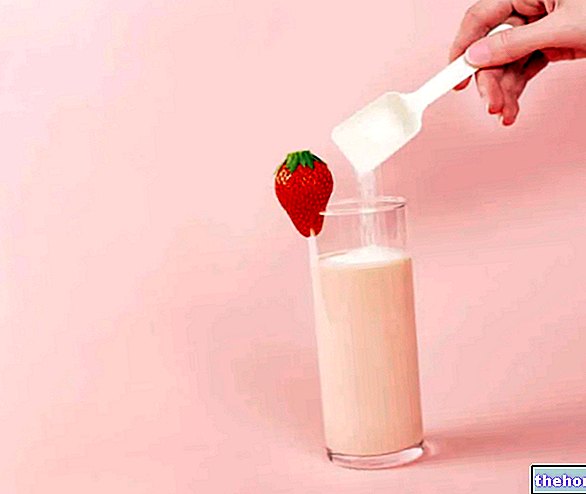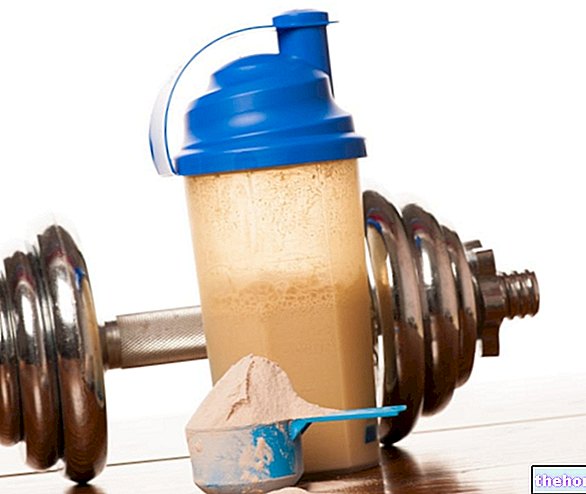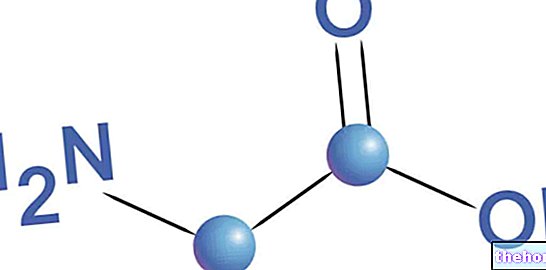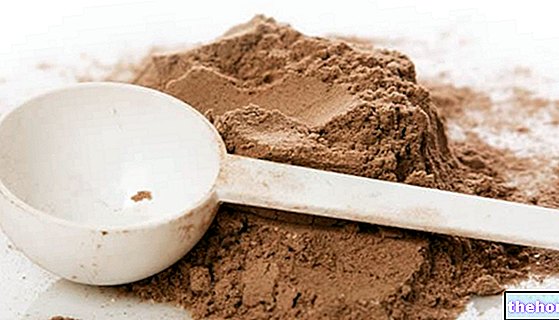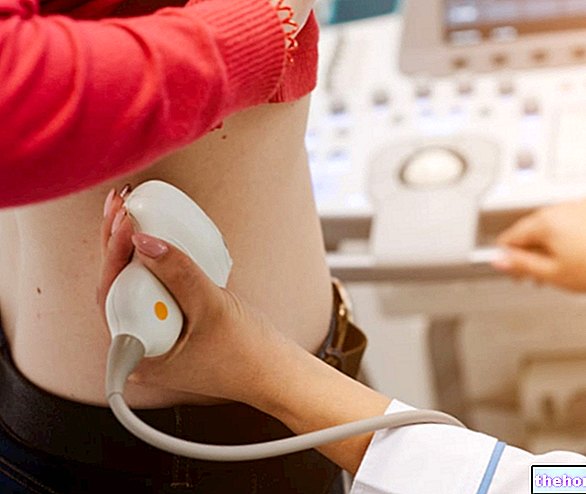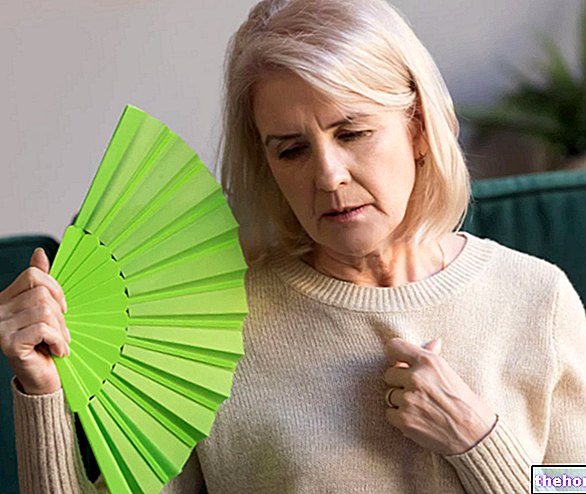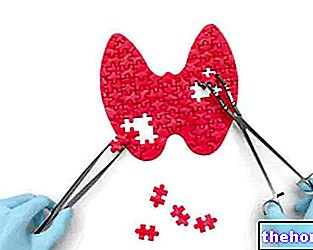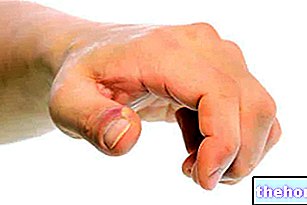
The correct intake of iron with the diet allows an "adequate presence of hemoglobin and erythrocytes (red blood cells), therefore an adequate supply of oxygen to the muscles. In sports, a small reduction of hemoglobin in the blood (in the order of 10% ) can lead to a significant deterioration in performance (up to 25%); in competitive activities, this would be equivalent to the difference between the first and last position.
Such awareness has therefore prompted various trainers and personal trainers to suggest objectively excessive iron food supplements. In this article we will deal in more depth with the topic of excess iron, particularly in endurance practitioners.
Furthermore, in spite of what could be deduced by stopping to read the title, what we are going to explain could prove to be of great help even for those who practice mixed activities. Iron is in fact extremely important for very busy athletes and, sometimes, it can be deficient even in cardio fitness practitioners with a high workload.
Let's see why.
In which sports is iron important?
Fitness and sport are usually differentiated into aerobic and anaerobic or, even more spannometrically, into "strength" and "endurance" (endurance). On the other hand, this classification is more often than not misleading and does not allow to fully understand the real needs and the innumerable facets intrinsic to each activity.
In order not to go too far, we will limit ourselves to emphasizing that the expression of one ability does not preclude the activation of another; that said, the importance or prevalence of a metabolism varies considerably according to the specific case.
It is in fact true that muscle strength remains the basis of everything, but its maximum expression and the anaerobic alactacid metabolism have a different impact on the performance of a marathon runner rather than a judoka. The same also applies to capacity and aerobic threshold.
Ultimately, the correlation between iron and endurance should not only concern "cross country" purists (such as marathoners) but also many others; for example, amateur bodybuilders who need to enrich their training with cardio disciplines (aerobic aerobic circuits, power aerobic circuits, cardio fit trainings, step, spinning, aerobic dance, tone-up, etc.) in order to increase energy consumption, oxidation lipid and glucose and insulin sensitivity, or practitioners of mixed disciplines such as crossfit and functional training etc.
Let's start with a brief review of the role of iron in the human body.
; it then slowly increases in the growth phases up to a total of about 3.0-5.0 mg / kg in the adult.Three quarters is used for vital functions, while about a quarter acts as a reserve linked to specific proteins such as ferritin and hemosiderin - 1.0 mcg / l of serum ferritin corresponds to about 10.0 mg of storage iron.
It travels through the blood mainly thanks to an "other protein called transferrin - circulating transferrin levels are referred to as sideremia (due to its correlation to the total amount of iron in the body)."
Iron is used for the synthesis of hemoglobin - oxygen transport protein in the blood - of myoglobin - cellular oxygen reserve protein - and collagen; it is also a coenzyme factor involved in cellular respiration and in the metabolism of nucleic acids , is an integral part of the contractile proteins actin and myosin, structure of nails and hair, and is also present in white blood cells.
Need, deficiency and excess of iron
The need for iron is closely linked to the physiological condition of the subject. Men need 10 mg / day of iron, fertile women - for menstrual losses - up to 18 mg / day and pregnant women even more (> 20 mg / day).
The human body takes great care of iron, to the point of recovering it even from old and degraded erythrocytes from the spleen; for this reason, although the diet may be potentially iron deficient, the organism is able to resist before running into specific insufficiency.
Iron deficiency manifests itself differently depending on the severity. It commonly determines a reduction of sideremia, red blood cells or erythrocytes (forming part of the corpusculate), ferritin and / or hemosiderin, with consequent iron deficiency anemia.
The latter causes tiredness, "shortness of breath", constant feeling of cold and pallor, but also tinnitus, headaches and other non-specific symptoms. Symptoms worsen in case of low blood pressure and tendency to hypoglycemia - which are mainly associated in cases of malnutrition. Iron deficiency anemia can be complicated by folic acid and cobalamin (vitamin B12) deficiency, the primary cause of megaloblastic anemia.
The potentially toxic excess of iron, on the other hand, is linked to primary pathologies to be treated pharmacologically; diet alone cannot be considered responsible.
Food sources of iron
Iron must necessarily be taken with the diet; it represents a mineral-type nutrient that can be classified among the microelements-trace elements. In foods it can be found in various chemical forms, which establish its real bioavailability for the body (potential absorption and use metabolic).
The most bioavailable is emic iron, which is abundant in meat, fish, offal and egg yolk. The non-emic, absorbed in lower quantities, appears in both foods of animal and vegetable origin and is subdivided according to state of oxidation into: ferrous (2+), also typical of foods of animal origin, and ferric (3+), instead characteristic of vegetables - the least absorbable of all, which requires conversion into Fe2 +. Some anti-nutritional factors such as phytic and oxalic acid hinder the absorption of iron, while vitamin C is credited with the ability to optimize intestinal uptake.
Note: the digestive system has the ability to adapt the absorption of iron according to the needs of the body, increasing it up to 20 times if necessary, or drastically reducing it if necessary.
Other ways of taking iron are fortified or added foods (such as breakfast cereals) and food supplements.
Did you know that ...
Vegans (especially fertile women), who obviously do not eat foods of animal origin, must take into account the possibility of suffering from iron deficiency and frequently check their iron, ferritin and hemosiderin levels through blood tests.
he should feed himself in such a way as to adequately synthesize the necessary hemoglobin.
Red blood cells make up about 35-50% of the blood volume. Note: the ratio between the liquid part and the solid part of the blood is defined as "hematocrit", and is evaluated by centrifugation. Note the large gap in normality values. It could be deduced that a sportsman - especially endurance sports - should keep 50% closer than 35. In reality this is only partially true. Considering that it is not possible to increase the overall volume of body blood, considerable percentage variations are more often related to the fluctuation of the liquid component. For example, by making this measurement before and after a performance with a high sweating component, the red blood cells will certainly be increased. This however is not to be considered a positive factor because:
- the total number of erythrocytes is actually unchanged
- dehydration is a limiting factor on performance.
How, therefore, to establish more accurately if the increase in red blood cells is real (absolute) or fictitious? First of all by measuring them at rest - away from training - in a condition of eunutrition and in relation not only to the liquid portion but also to that solid - white blood cells, platelets, proteins, etc.
For further information: Iron requirement in EnduranceIncrease hemoglobin
If as the hematocrit increases there is also an absolute increase in erythrocytes, therefore in hemoglobin, the quantity of oxygen transported to the muscles should also be greater, with an advantage for sports performance. This is why every endurance agonist tries to maintain a your hematocrit levels are optimal.
However, "keep" and "increase" are certainly not the same thing. To keep them at optimal levels it is sufficient to feed properly, taking the right amounts of iron (and more), and recovering enough. Actually increasing the erythrocytes, on the other hand, is not so simple; the permitted systems, not prohibited by law, are training at high altitude (with a lower percentage of oxygen) and breathing air (in a cylinder) with a higher percentage of oxygen. Curiously, although based on a diametrically opposite concept, both systems they cause an increase in physiological erythropoietin (EPO) and a consequent increase in circulating hemoglobin. Note: The effects of any system aimed at increasing the EPO should be considered only transitory. On the other hand, blood transfusion (obsolete) and the use of synthetic EPO are prohibited.
Side effects of high hematocrit
However, it should be noted that an excessive hematocrit means having a blood flow that is too dense, with consequent difficulties for the cardiovascular system - especially for the central pump called "heart".
In the most extreme cases it can also lead to cardiac arrest. The unwary users of synthetic EPO therefore not only run the risk of disqualification for doping, but also serious consequences for health.
Why can hemoglobin be reduced in endurance?
Given the endogenous recovery capacity of iron, many readers will be wondering why it is so important to manage nutrition. It is easy to say. Because this process is obviously effective only in percentage terms, and why tissue compressions - such as the plantar ones of runner - cause lesions to the red blood cells drastically shortening their half-life. Moreover, in sports, hemoglobin and red blood cells are over-exploited, which further reduces their lifespan.
Especially in athletes, iron deficiency is not always correctly diagnosed. This is because it manifests itself first of all with a decrease in performance, on the other hand more often attributed to various factors (nutritional and otherwise). Moreover, the condition of well-being and "baseline" health of a sportsman is usually greater than a sedentary person, which tends to reduce the extent of less severe symptoms.
It is therefore recommended for all athletes, especially endurance athletes, to make appropriate haematological tests to ensure that they are getting enough iron in their diet. However, the blood test should not be limited to evaluating the hematocrit, but also the amount of ferritin - preferably also of hemosiderin.
There are not a few cases of athletes who have compromised their sports performance due to undiagnosed iron deficiencies, having examined only iron and not its reserves in laboratory analyzes. The measurement of serum iron alone may not be useful in determining its real deficiency.
For further information: Iron Supplements for Endurance in endurance sports it was really immoderate; dosages up to 100-200 mg / day were not uncommon. This was done primarily to avoid the deficiency, but also in an attempt to further push the hematopoiesis in order to increase performance. It was believed that by increasing the iron in the diet, an improvement in aerobic athletic characteristics could be obtained.In reality this is not the case. The integration of iron and other nutrients related to the production of mature red blood cells is useful and fruitful only in the case of a pre-existing deficiency or an immediate increase in requirements - for example, after a blood donation. Fortunately, in most cases the aptitude to Excessive supplementation of iron in the diet was found to be harmless; however, we must not forget that the body is unable to actively excrete it effectively.
While the excess of other minerals is usually eliminated in the urine, the ability to excrete iron implies different ways (sweat, faeces and epithelium) but decidedly ineffective; obviously, the athlete is no exception. This obviously excludes losses. menstrual and haemorrhagic - such as anal bleeding etc. The essential defense against the toxic accumulation of this mineral is mostly the limitation of its intestinal absorption. At best, much of the supplement therefore remains in the stool - which takes on a dark, almost black color, often too solid or too liquid a consistency.
However, the risk of intoxication or iron poisoning should not be underestimated. In medicine, mainly due to serious pathologies, the excessive accumulation of iron is combated pharmacologically or, in the worst case, with bloodletting.
The first symptoms are apparently generic, consisting of nausea, vomiting and abdominal pain. The serious side effects of siderosis (chronic accumulation in the tissues) include convulsions, collapse and - in the long term - liver cirrhosis with organ failure and death.
However, there is another important clinical sign, albeit extremely difficult to recognize, namely the increased sensitivity to bacterial infections; these microorganisms find in the increased availability of iron a resource for growth - it is no coincidence that breast milk contains little iron. with respect to the needs of the newborn who, on the other hand, comes to light equipped with substantial endogenous reserves (75 mg / kg).
Supplementing with excessive amounts of iron (in some cases, up to 300 mg / day) does not improve performance and, on the contrary, can lead to a gradual accumulation in the body, up to long-term side effects such as siderosis and cirrhosis. It is unlikely that acute toxicity will be reached such as to cause convulsions, collapse and therefore death, which is why massive iron supplementation should be stopped immediately in the presence of nausea and vomiting.

